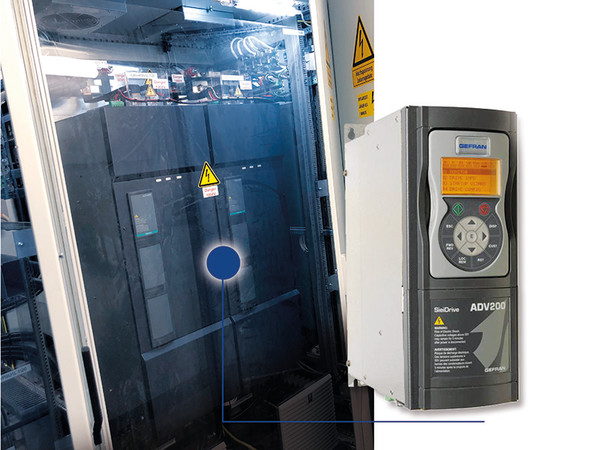Frequency converter in the Einstein elevator
Physical and production-related experiments for applications in outer space, on the moon or even on Mars: what sounds like science fiction could soon become real.
This is because currently research experiments are taking place in the drop tower – under various gravitational conditions and in weightlessness.
To simulate environmental conditions in outer space, the Institute for Transport and Automation Technology (ITA) established a major project with the Institute for Quantum Optics of the Leibniz University Hannover: the Einstein elevator.
Whereas the repetition rate is about two to three experiments a day in other drop towers, a new run through can take place there every four minutes. Instead of big vacuum chambers and free fall, a guided experimental chamber shoots up and down rails at high speed here. There is space for experimental rigs with a diameter of 1.7 m, a height of 2 m and a maximum weight of 1000 kg in the gondola.
Drive concept with Gefran converters
"The Einstein elevator is a masterpiece of interdisciplinary engineering science. It combines drive technology from roller coaster construction with the positioning accuracy of a machine tool," reported Professor Ludger Overmeyer, Head of the Institute for Transport and Automation Technology (ITA) at the Leibniz University Hannover. The challenge: big loads move and brake again with absolute accuracy at a very high speed.
Three independent drive trains are installed in the Einstein elevator. Two of these serve to accelerate the gondola. The converters take care of the synchronisation. Per drive train, five ADV200 series frequency converters from Gefran, each with a power of 400°kW plus overload of up to 180 percent, are connected in parallel to move the system very symmetrically upwards.
The third drive train serves to regulate the hovering height (weightlessness) and generate variable accelerations. What is particularly impressive: given a drive power of up to 5 MW, the hovering height of the experiment can be kept constant in the gondola down to a few millimetres.
High drive power and control accuracy
 Five parallel-connected ADV200 converters ensure symmetrical upward motion in each of the two drivetrains of the Einstein elevator. Photo: © Leibniz Universität Hannover / Ch. Lotz, SIEI AREG GmbH
Five parallel-connected ADV200 converters ensure symmetrical upward motion in each of the two drivetrains of the Einstein elevator. Photo: © Leibniz Universität Hannover / Ch. Lotz, SIEI AREG GmbHIntrasys GmbH developed the sophisticated drive, braking and control system for the travel sequence of the Einstein elevator, including hover control, together with the Leibniz University Hannover. As a result, the gondola, which weighs tons, is accelerated vertically at 5°G vertically in 0.5°second to 72°km/m and securely braked again. For this, the company's linear drives need very high current for a few seconds.
Upon launching the gondola, a large quantity of energy is taken from the SuperCap energy stores of Stercom GmbH and passed on to the stators by the Gefran converters. There, the electricity generates a magnetic field that then interacts with a magnetic field and drives the vehicle. To save weight, a special magnet yoke was designed explicitly for the system.
Seamless interplay of the controller with the measurement technology is of decisive importance. "Our sensors are located directly on the gondola and constantly send data in real time to the drive, which is installed in the 40 m high tower," explained Overmeyer "Given the long transmission route and high speed, this is a real challenge."
Further steps are planned
The researchers are very satisfied with the interplay of the drive components and the cooperation of the project partners. "The highly automated system is to undergo further development soon as part of new experiments," Ludger Overmeyer revealed.
Additional travel profiles are to facilitate an even wider experimental range in the Einstein elevator to reproduce different gravitational or air and ambient conditions down to the tiniest detail. This will bring the goal of constructing infrastructures outside the earth in future a little bit closer.
More information: gefran.com
Link to the Einstein elevator























Write a comment